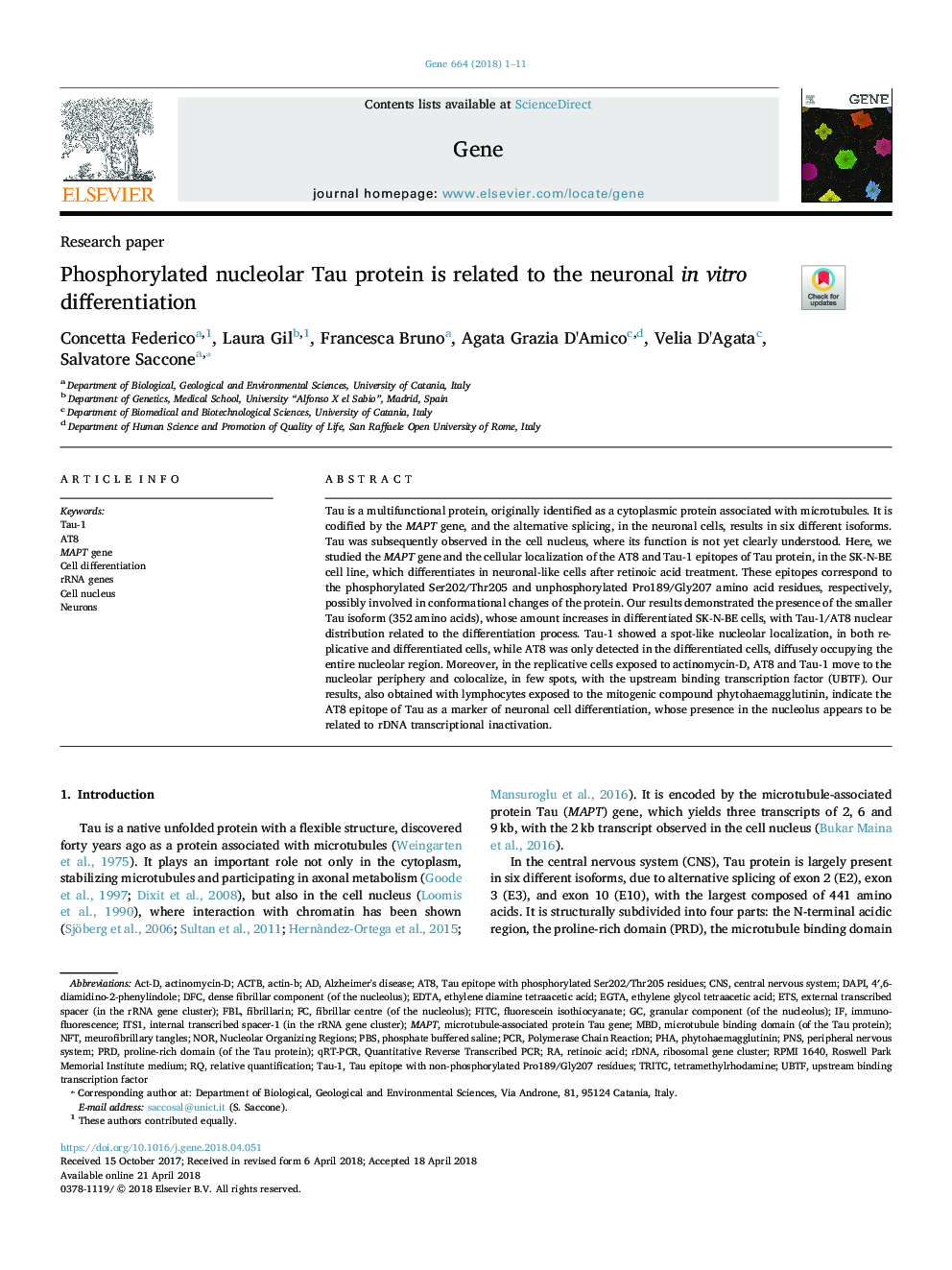| Article ID | Journal | Published Year | Pages | File Type |
|---|---|---|---|---|
| 8644938 | Gene | 2018 | 11 Pages |
Abstract
Tau is a multifunctional protein, originally identified as a cytoplasmic protein associated with microtubules. It is codified by the MAPT gene, and the alternative splicing, in the neuronal cells, results in six different isoforms. Tau was subsequently observed in the cell nucleus, where its function is not yet clearly understood. Here, we studied the MAPT gene and the cellular localization of the AT8 and Tau-1 epitopes of Tau protein, in the SK-N-BE cell line, which differentiates in neuronal-like cells after retinoic acid treatment. These epitopes correspond to the phosphorylated Ser202/Thr205 and unphosphorylated Pro189/Gly207 amino acid residues, respectively, possibly involved in conformational changes of the protein. Our results demonstrated the presence of the smaller Tau isoform (352 amino acids), whose amount increases in differentiated SK-N-BE cells, with Tau-1/AT8 nuclear distribution related to the differentiation process. Tau-1 showed a spot-like nucleolar localization, in both replicative and differentiated cells, while AT8 was only detected in the differentiated cells, diffusely occupying the entire nucleolar region. Moreover, in the replicative cells exposed to actinomycin-D, AT8 and Tau-1 move to the nucleolar periphery and colocalize, in few spots, with the upstream binding transcription factor (UBTF). Our results, also obtained with lymphocytes exposed to the mitogenic compound phytohaemagglutinin, indicate the AT8 epitope of Tau as a marker of neuronal cell differentiation, whose presence in the nucleolus appears to be related to rDNA transcriptional inactivation.
Keywords
TRITCDAPIITS1PRDNFTMAPTtetramethylrhodamineMBDNORPBSPhytohaemagglutininAct-DRPMI 1640AT8actinomycin-DMAPT geneNucleolar organizing regionsrRNA genesRDNADFCETsFITCqRT-PCREGTAFBLPHA4′,6-diamidino-2-phenylindoleEDTAethylene diamine tetraacetic acidethylene glycol tetraacetic acidRelative quantificationImmunofluorescenceAlzheimer's diseaseCell differentiationCNSRetinoic acidcentral nervous systemperipheral nervous systemActbPhosphate buffered salinefluorescein isothiocyanateFibrillarinRoswell Park Memorial Institute mediumNeuronsCell nucleuspolymerase chain reactionPCRPNS
Related Topics
Life Sciences
Biochemistry, Genetics and Molecular Biology
Genetics
Authors
Concetta Federico, Laura Gil, Francesca Bruno, Agata Grazia D'Amico, Velia D'Agata, Salvatore Saccone,
